What Hi-Fi? Verdict
The latest iPad Air gets more than just a makeover – it’s a brilliant all-rounder and all the tablet most people could ever need
Pros
- +
Great picture and sound
- +
Attractive design
- +
Excellent user experience
Cons
- -
Imperfect front-facing camera
- -
Touch ID button is awkward
- -
Not the cheapest tablet around
Why you can trust What Hi-Fi?
It’s not every day an Apple product gets what you could call a major revamp. On many occasions in the past, there has been a slight change here and a minor tweak there, leaving the tech world slightly underwhelmed. However, by Apple’s standards, it has positively gone to town on the iPad Air (2020).
Not only does the fourth generation iPad Air boast a brand new design, complete with a new Touch ID sensor and speaker layout, there’s also a bigger screen, more powerful processor and improved main camera. Everything is set up for the iPad Air (2020) to make quite the splash, but where does it rank when it comes to the best iPads you can buy?
Pricing
The fourth-generation iPad Air slots between the entry-level iPad and the flagship iPad Pro (2021). It’s available with either 64GB or 256GB of storage and prices start at £579 ($599, AU$899) for the entry-level 64GB Wi-Fi-only model and £729 ($749, AU$1129) for the Wi-Fi/Cellular model.
That makes the latest generation iPad Air around £100 ($100, AU$120) more expensive than the previous model. If Apple had just touched up the design and kept the status quo, you’d probably consider that a big jump in price. But the new model is a clear improvement on iPad Airs of old.
Build
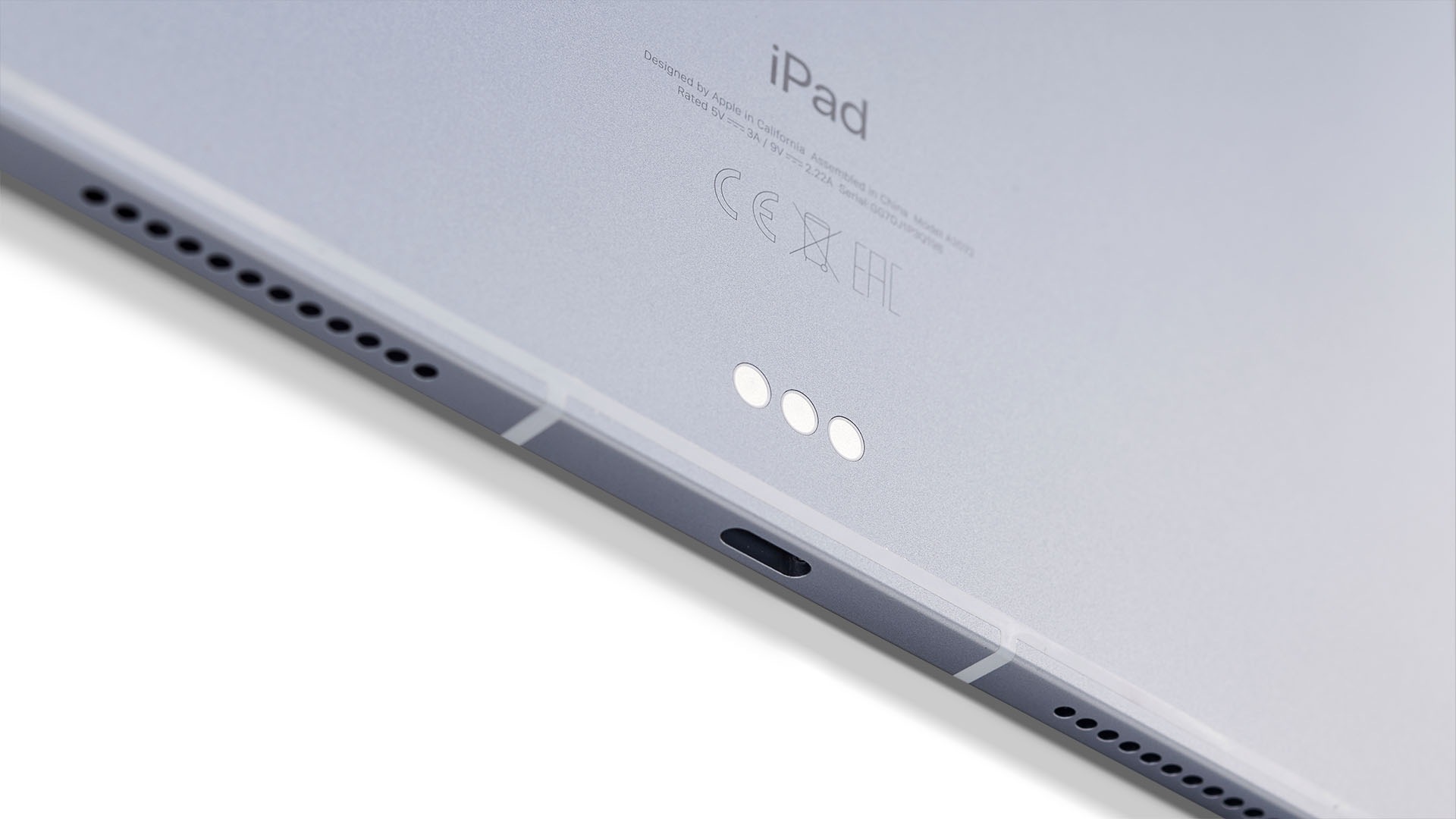
Nowhere are the changes more obvious and apparent than with the new iPad Air’s exterior. It has been redesigned to mirror the iPhone 12, and if you like the look and feel of that smartphone, you’re going to love the iPad Air 4.
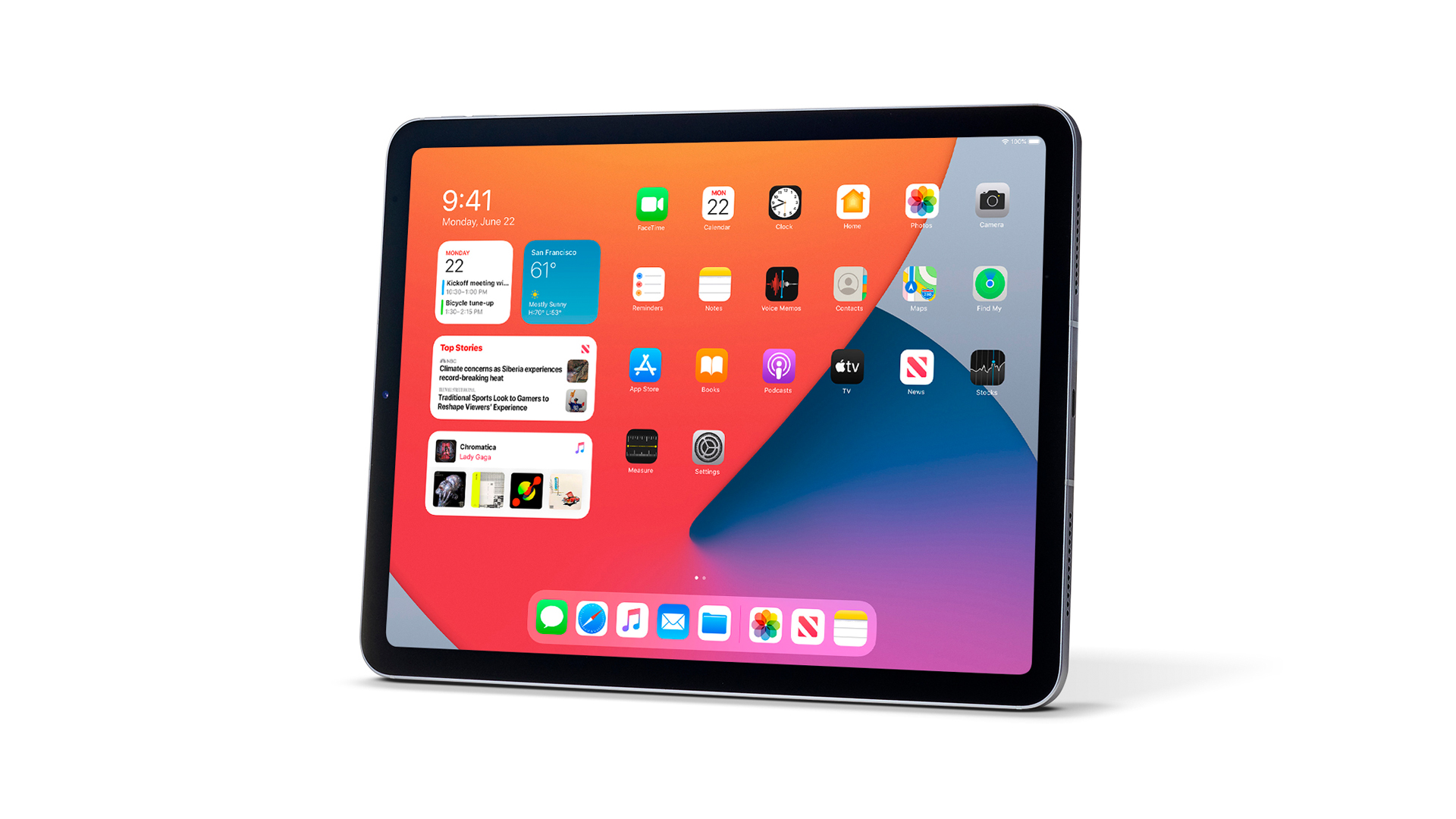
Screen size 10.9in
Resolution 2360x1640 pixels
Storage 64GB/256GB
Finishes x5
Battery life 10 hours
Cameras 12MP rear / 7MP front
Dimensions (hwd) 24.8 x 17.9 x 0.6cm
Weight 458g
Those flat sides and crisp edges give the tablet a more purposeful appearance from the off. It makes for quite the contrast switching from the smooth, curved edges of the previous version, but it doesn’t feel uncomfortable, and those flat sides make it easier to grip when you’re watching in portrait or landscape.
It’s similar in look and feel to its big brother, the iPad Air Pro, although the Air is the first iPad to be made available in a range of optional colours. There are Rose Gold, Green and Sky Blue variants to choose from, in addition to the more traditional Silver and Space Grey. We find the Green finish of our review sample particularly easy on the eye.
Run your eyes around those flat edges and you’ll also spot a couple of new additions. The first is the presence of speaker grilles on the top and bottom of the tablet. Instead of offering speakers along just the bottom, the iPad Air 4 now offers landscape stereo speakers. That’s right, no longer does audio sound lopsided.
The iPad Air is now fitted with a USB-C port instead of Lightning, which makes one wonder why Apple is persisting with Lightning on the iPhone. Perhaps we’ll see the socket on the iPhone 13 when it makes an appearance later in the year?
The iPad Air’s volume buttons remain in the same location, as does the power button, although it’s slightly larger and longer, likely because it now handles Touch ID duties. We find that this takes some time to get used to and is at times a little more awkward to operate than the dedicated face-mounted Touch ID button of before. We can’t help but think a fingerprint sensor built under the screen, which is already used by smartphones such as the Samsung Galaxy S21 range, might work better.
Features
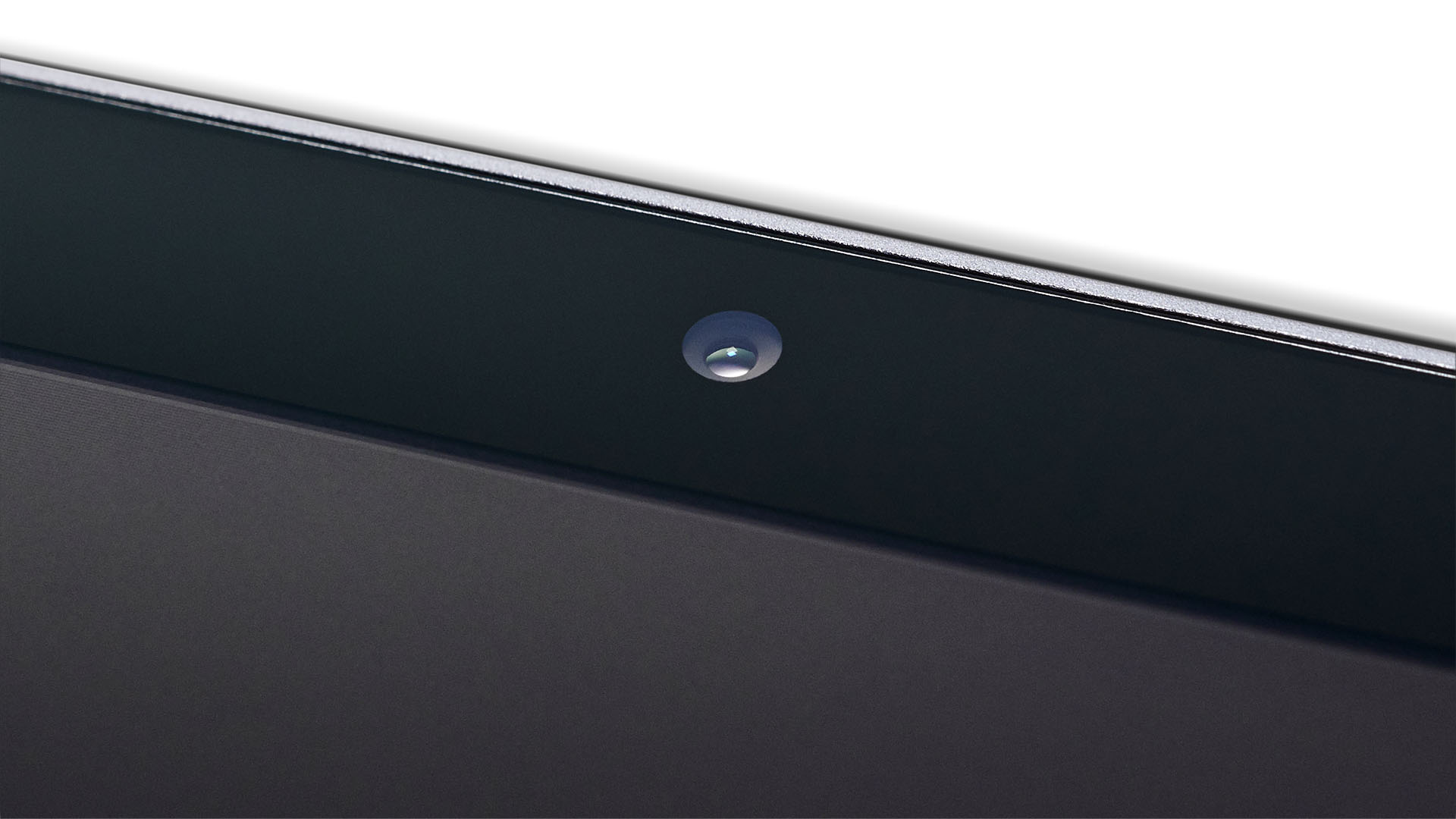
The big news on the screen front is that the new iPad Air is bigger than ever. At 10.9in, it’s marginally larger than the previous model (10.5in), but you only notice the difference when viewing the two tablets together. The effect is emphasised by the slimmer bezels at the top and bottom, which have been achieved by ditching the fingerprint scanner/home button. It all makes for a streamlined viewing experience.
Resolution is 2360 x 1640 (vs 2224 x 1668 on the iPad Air 3) with a pixel density of 264ppi and a maximum brightness of 500 nits.
It’s still a wide colour display with True Tone, so the iPad Air can adjust the balance of its screen based on ambient lighting conditions. The only thing it doesn’t have compared to its more expensive Pro sibling is a 120Hz refresh rate, which would be nice, but not vital.
The new iPad Air (2020) has the brains to match its beauty too. It is powered by Apple’s A14 Bionic chip, the same silicone that drives the entire iPhone 12 line.
In terms of CPU performance, Apple claims the iPad Air 2020 is 40 per cent faster than the previous generation A12 Bionic chip, while its GPU performance is supposedly up 30 per cent, too, for faster graphics processing.
Although it can’t match the specs of the iPad Pro 2021, both in terms of processing power and storage, Apple still claims the Air is more than powerful enough to be able to edit 4K video on and it’s fully compatible with the Apple Pencil 2, which will come in handy for creative types.
So how do Apple’s claimed performance percentage increases translate into real life? The iPad reacts extremely well to multiple apps being open and even the rigours of gaming. In fact, the iPad Air arguably turns the iPad Pro into even more of a niche product. For most people, the iPad Air 2020 will be a powerful enough tool.
Apps such as Netflix and Amazon Music boot up without hesitation, and even if you have more than a handful of apps running in the background, the iPad Air won’t struggle to cope. Navigating between apps via a series of simple swipes is quick and hassle-free, and once again, Apple’s intuitive iOS operating system delivers a smooth and class-leading user experience.
As far as cameras are concerned, the iPad Air 2020 sports a 12MP snapper on the rear (up from 8MP on the previous version) while it sticks with the old 7MP FaceTime HD camera on the front. The Air can record in 4K resolution at 24, 25, 30 or 60fps and capture slow-mo video in 1080p at 120fps or 240fps.
Apple has stripped down the accessories included in the box for the iPhone, but you still get a 20W charger to go alongside the USB-C charging cable. With a full battery, the iPad Air 2020 should be good for up to 10 hours of battery life under average use. As an occasional web browser and viewing device for the odd episode of The Crown, you should be more than covered.
Sound
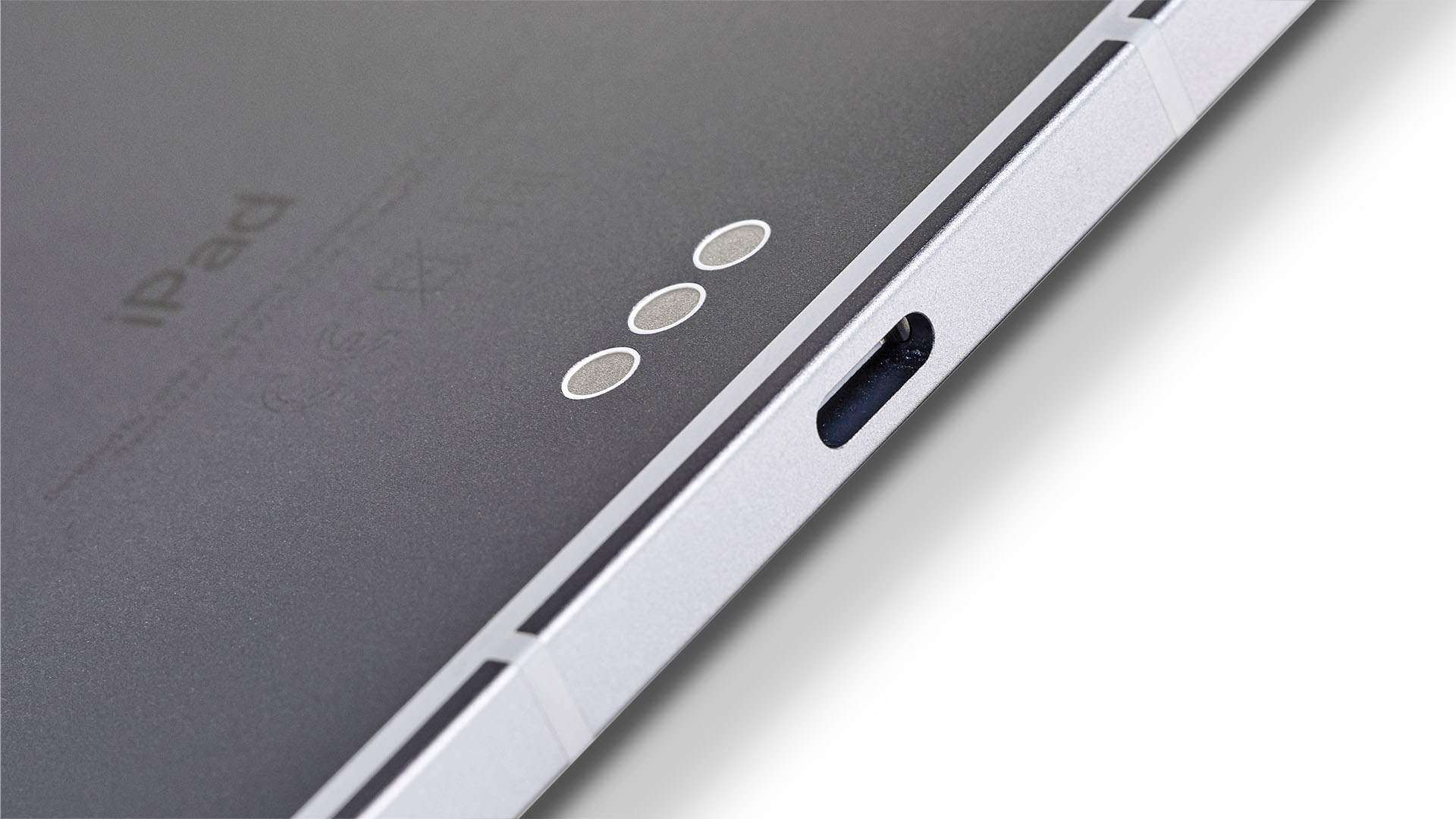
One of the more exciting changes to the iPad Air’s design from an AV perspective relates to its speakers. On the previous iPad Air, they were positioned on one side, on the edge beneath the Touch ID sensor. Here, the speakers have been repositioned to fire out from either end of the tablet, so you can be treated to proper stereo audio with both sides of your iPad contributing equally.
Not having the audio offset to one side makes a big difference. It’s a better fit for watching programmes in landscape mode, especially while bingeing episodes of your favourite series on Netflix. The most obvious improvement is a wider spread of sound, which helps give it a more cinematic and immersive feel. It’s not exactly surround sound, but it is better than it was previously.
The sound coming out of the speakers is more solid and defined too. There’s extra weight to dialogue and although the vibrations through the iPad’s chassis can be pretty disturbing at higher volumes, it never seems to muddy the clarity of what you’re hearing. Stick to normal volume levels and you’ll be just fine.
You still need to be a little careful about hand placement if you’re holding the iPad in landscape mode, although it is much improved on the older model.
Switch to playing tracks through a pair of wireless headphones and Apple’s trademark musicality is there to enjoy. The iPad makes quick work of Radiohead’s 15 Steps and its attempts to trip the tablet over, displays an excellent sense of rhythm and there’s a real snap to the claps that help keep the track on course. There’s plenty of precision to the percussion including a solid, weighty kick drum.
Screen
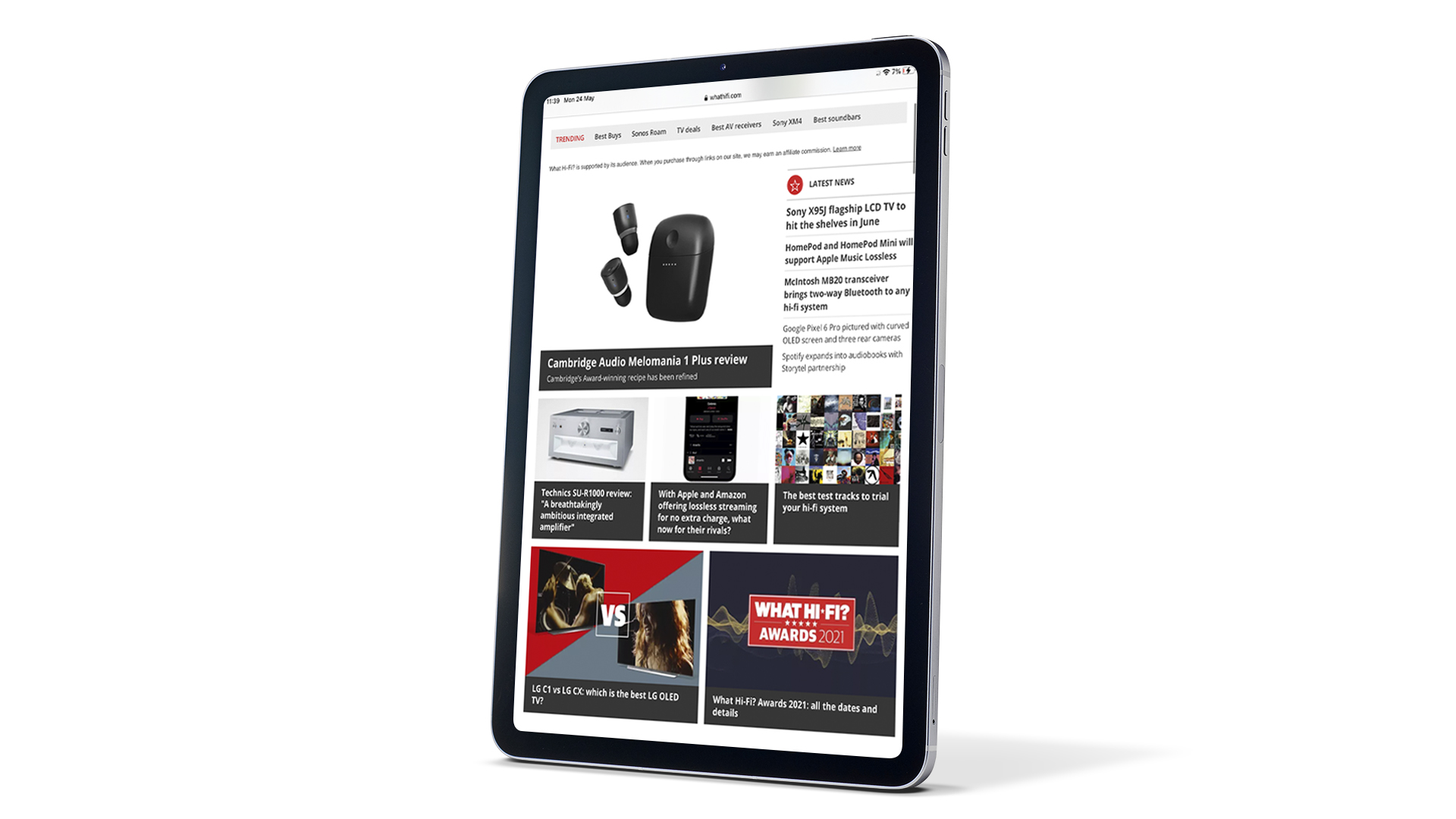
Apple’s tablets have a reputation for delivering excellent images when watching video and the iPad Air 2020 doesn’t let the side down. It’s punchy and bright, but also throws in a great level of subtlety when the scene demands. Compared with the previous model, the latest iPad Air appears a bit sharper, slightly better detailed and capable of great subtlety in dark scenes.
Playing the second episode of Jupiter’s Legacy on Netflix, as everyone lines up at the funeral of their fallen comrades, the detail and definition in each character’s suit really captures the eye. Blacks are deep and rich, but there’s subtlety around creases and where light casts a shadow on certain areas. There’s a great general sense of depth to the scene too.
The iPad peers into the nooks and crannies and paints different gradations of black and grey with great care and attention. It also picks out subtle differences in the intensity of the white shirts worn by some of the characters. Skin tones also appear natural. As Sheldon, Walter, Grace and Brandon sit down for dinner, the bulbs in the chandelier bulbs emit a welcoming, warm glow and there’s a great sense of depth.
Verdict
If you want the ultimate iPad experience, Apple would probably point you in the direction of its Pro range. But the iPad Air 4 (2020) is all the iPad most people will ever need. It’s such a solid and capable all-rounder, that very few will feel the need to spend the extra for the iPad Pro.
The design is superb, the user experience is tough to beat and both sound and picture quality are on point. It’s an excellent tablet, and even with a slight price increase, we still feel it’s worth every penny.
SCORES
- Picture 5
- Sound 5
- Features 5
MORE:
Read our guide to the best tablets
Read our Samsung Galaxy Tab S7+ review
Everything you need to know about the new Apple iPad Pro
What Hi-Fi?, founded in 1976, is the world's leading independent guide to buying and owning hi-fi and home entertainment products. Our comprehensive tests help you buy the very best for your money, with our advice sections giving you step-by-step information on how to get even more from your music and movies. Everything is tested by our dedicated team of in-house reviewers in our custom-built test rooms in London, Reading and Bath. Our coveted five-star rating and Awards are recognised all over the world as the ultimate seal of approval, so you can buy with absolute confidence.
-
Navanski The name should say it all, What HiFi. Why are you reviewing tablets?Reply
You review the sound but there is no way that the sound through the speakers could be described as HiFi. As for the sound through wireless earphones that has got to rely heavily on the quality of the earphones and the DAC, not the tablet.
You even neglected to mention that the tablet has no 3.5mm jack. -
Deavo Reply
Maybe because the review audio and video equipment? 🤷🏻♂️Navanski said:The name should say it all, What HiFi. Why are you reviewing tablets?
You review the sound but there is no way that the sound through the speakers could be described as HiFi. As for the sound through wireless earphones that has got to rely heavily on the quality of the earphones and the DAC, not the tablet.
You even neglected to mention that the tablet has no 3.5mm jack. -
Navanski Not exactly sure what that means but..................Reply
hi-fi
/ˈhʌɪfʌɪ/
adjective
relating to the reproduction of music or other sound with high fidelity.
"hi-fi equipment"
noun
a set of equipment for playing recorded music in high-fidelity sound.
"I bought him a new hi-fi for Christmas"
Definitions from Oxford Languages
Urban Dictionary
hi-fiA term arising from the 1950s denoting a high fidelity audio system. The term fell out of use after the advent of stereo, but is used today to denote a class of audio equipment above the mass market which reproduces audio faithful to the recording. The term is best used to differentiate real audiophile audio equipment from the myriad of clock radios, cheap home theater in boxes, and of course systems designed for listening to music of the urban persuasion.

